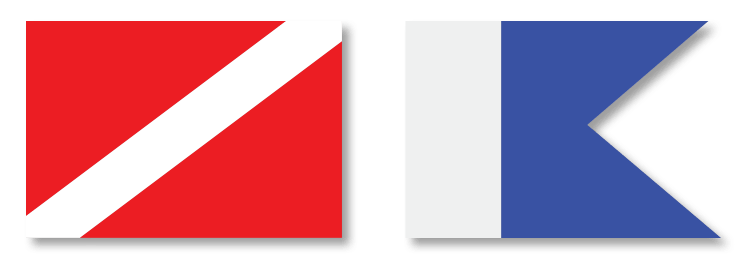COMMERCIAL DIVER DEATH UNDERWATER EXPLOSION WHILE BURNING
Root Causes of Incident:
FAILURE OF DIVING CONTRACTOR TO FOLLOW PROCEDURES
FAILURE OF DIVING SUPERVISORS TO COMMUNICATE DURING TURNOVER
Commercial saturation diver “CH” (age 33), covered under the law as a Jones Act Seaman died in an underwater explosion during a bell run to burn access holes in a platform deck in a depth of approximately 250 feet. Lighting the torch on the platform deck ignited trapped hydrocarbons or gas that had, unknowing to the diver, accumulated beneath the deck.
Bobby Delise and Alton Hall of the New Orleans based maritime law firm Delise and Hall were retained by the diver’s widow; at the time of her husband’s death in the summer of 2010 his widow was seven months pregnant. The widow retained Bobby Delise and Alton Hall to represent both her and her yet-to-be born son in their claim against the diving contractor and the owner of the DSV.
Litigation was commenced in the United States District Court for the Eastern District of Louisiana. The case was resolved following extensive settlement negotiations with with the assistance of a private mediator.
Facts
DIVING PROJECT AND PREVIOUS BURNING INCIDENTS
At the time of the incident the diving contractor was contracted with a major oil company to provide the expertise, personnel and diver support vessel (DSV) to salvage damaged platforms from the Gulf of Mexico. The platforms were damaged during Hurricane Katrina. The toppled platform was positioned in 250 feet of water in the Gulf of Mexico, off the coast of Louisiana. The diving contractor’s DSV was used as a diving platform.
In the thirty days prior to the explosion the diving contractor had engaged in sequence of underwater burns all throughout the platform. The platform lay on the GOM floor tilted approximately 20-30 degrees. The sequence of the burns began at the high end and progressed down, across and back upward in a “U” profile. As a result of the progression of previous burns the location of the fatal burn was at the high end of the platform and, unfortunately, gases from previous burns. It was discovered by Delise and Hall during litigation that gases had accumulated at the high end of the platform, exactly where the explosion occurred.
In this matter the diver was tasked with employing a Broco 22 burning torch to cut open an access holes for slings that were to be used in the lift of the toppled platform from the ocean floor.
The operational plan for the project originally provided that the access holes were to be cut, rather than burned, using a milling machine rather than the employment of a diver tasked to burning holes. This decision was based, in part, because of the underwater explosions experienced by the diving contractor on previous serious burning explosion incidents 22 and 40 months earlier. As a result of both incidents involving the diving contractor’s commercial divers, also represented by Delise and Hall in their litigation, the diving contractor had agreed to institute “corrective actions” designed to reduce the risks of underwater explosions resulting from underwater burning.
One of the more important corrective actions made by the diving contractor was the selection of alternatives to burning. Other important corrective actions involved placement of more responsibility on the on-site supervisor prior to the decision to allow an underwater burn and, secondly, publishing of a more concise and task specific Job Safety Analysis (JSA) which focused on documentation of inspection of the work site.
Six weeks prior to CH’s death a decision to employ the milling machine was changed via a management of change order (MOC). As a result of the MOC contractor’s onshore supervisors decided that the divers would burn the access holes with the proviso that supervisor personnel strictly adhere to conducting safety meetings, prepare job safety analysis protocol and confirm that the thorough inspections of work areas for hydrocarbons and trapped gases be conducted, and logged.
The Diver’s Death
The fateful bell run began at 02:48. CH’s bell partner did the first lockout on the bell run and CH relieved him to start his lockout at 08:37. Soon after CH locked out a supervisor change out occurred with the original supervisor turning over the command of the supervisor’s chair. CH’s supervisor informed CH to travel to the clump weight under the dive bell and standby because he was leaving the vessel as his time offshore was over. At the time of the order to “standby” the relief supervisor had not arrived to location.
The helicopter landed at 09:54 dropping off the company’s relief supervisor on the vessel. The helicopter’s rotors never stopped as supervisor who commenced the bell run and others departing the vessel boarded the chopper.
The departing supervisor and his relief momentarily exchanged pleasantries on the deck and during those few moments the departing supervisor presented his relief a one page document titled “turnover notes 7/1/10”. In his “Turnover Notes” the departing supervisor simply stated in bold: “Please be aware that we have been burning on this structure a lot, and there will be gas and possibly oil pocket throughout the upper deck area”.
At 10:15 the relief supervisor arrived at the control station and assumed command of CH’s lockout. The newly arrived supervisor directed CH to the site of a burn. On that burn the explosion occurred killing the diver.
Delise and Hall’s Representation of Diver’s FamilyDelise and Hall argued that the diving contractor was responsible for CH’s death through its on-site supervisors’ failures and the off-site decision not to employ the safer alternatives to burning.
Delise and Hall argued that the company supervisor failed to supervise CH’s lock out, failed to correctly plan the project in a safe way for the divers and failed to properly advise the relief supervisor of the situation at depth. The off-site supervisors engaged in the salvage project, contrary to their clear recognition of earlier errors in burning incidents, violated every company policy published with respect to underwater burning. Most egregious was the company’s ignoring every corrective action plan instituted following the two previous incidents that nearly killed its divers as they burned.
This diving contractor had a very thorough clear and concise set of safety and diving safe practices manuals. The manuals dictate specific procedures for conducting burning underwater. The most important mandates involve the supervisor’s preparation of a company burning permit and Job Safety Analysis form (JSA) specifically for each burn. The supervisor must complete a safety checklist and then submit the permit to the Operations Manager for approval and verification. The JSA identifies risks of a specific procedure, provides safeguards to minimize the risks and assigns individuals to implement the safeguards. The supervisor then reviews the JSA with the diver prior to each lockout.
On this project a JSA was prepared for the work to be done on July 1st, but because of bad weather no diving was done that day. Prior to bell run #95 a diving supervisor simply changed July “1” to July “2” and never reviewed the work scheduled for July 2.
Delise and Hall also argued that the relief supervisor did not, and could not, undertake all of the pre lockout safety meetings or JSA reviews because he had only arrived on the vessel 37 minutes prior to the explosion. He assumed the supervisor’s chair 16 minutes prior to the explosion.
Additionally, the diving contractor required that prior to a supervisor transferring his command to his relief supervisor that he must prepare a document entitled a “Handover Noted for EHS Functions”. In this document the departing supervisor was to advise his relief of all of the pertinent facts, incidents and progress of the job. No such document existed in this case.
Because of a change in sequence of burns, several burns occurred on the downward (deeper) side of the platform prior CH’s. Industry protocol requires that burns take place high side first/low side later so that if there is any gas migration, especially in areas difficult or impossible to inspect, the chance of explosion is greatly lessened.
Following Delise and Hall’s extensive discovery of the facts surrounding the diver’s death and supportive expert testimony secured by Delise and Hall the case settled six months following the death of the commercial diver.
Resolution
Delise and Hall convinced the diving contractor’s insurance carrier to resolve the case during mediation. Because of the serious of the settlement terms the amount of resolution paid to CH’s family is confidential.


